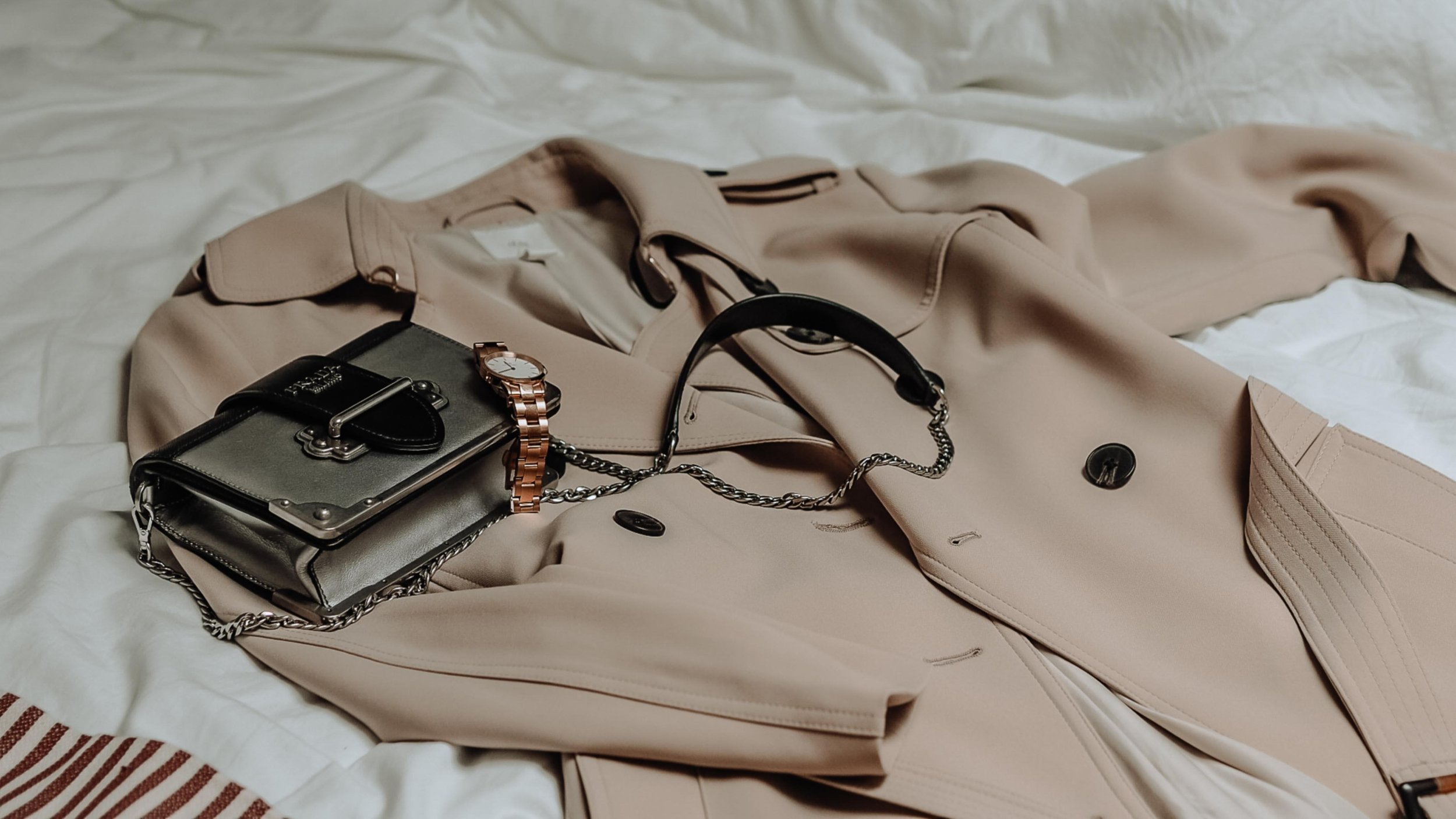Is Resale the Sustainable Future of Luxury?
Resale is a growing part of the global luxury market and has surged over the last couple of years. But how does resale fit in with luxury, and could it be the key to a more sustainable luxury industry?
Resale has become an increasingly important part of the luxury market over the last few years, drawing the attention of big brands, business analysts and consumers alike.
Many in the resale space have been claiming it’s a greener way to purchase luxury, while others say the growth of resale shows an emerging circular economy within the luxury sector. Either way, in an industry with such strong, entrenched values around exclusivity, any shift towards second-hand or pre-loved goods is worth taking note of.
In light of these significant changes, is it possible that resale could become the sustainable future of the luxury industry? Keep scrolling to find out more.
What is Luxury Resale?
Resale is a term that’s been thrown around a lot in luxury news of late, but what exactly is it?
Simply put, resale in luxury is the purchase and sale of pre-loved luxury goods. This includes luxury apparel, jewellery, watches, bags and other accessories, as well as art, antiques and much more.
Today, the majority of luxury resale activity takes place in person and largely within the borders of the European Union. However, in recent years, a handful of dedicated digital platforms have started to get into the business.
Stores like Vestiaire Collective and The RealReal have given luxury consumers the chance to buy and sell second-hand luxury apparel online, introducing a whole bunch of innovations into the sector. For example, Vestiaire Collective undertakes a rigorous verification process for all the designer finds that pass through its hands, ensuring that its 15 million shoppers can expect authentic luxury goods.
Being exclusively online, these stores are also remarkably agile and give consumers the option to ‘watch’ certain item categories and get email notifications whenever their desired goods become available. They also make the sale process easy and transparent, so owners looking to make some space in their wardrobes and jewellery boxes can start earning without a fuss.
Thanks to these platforms, around 25% of luxury resale takes place online — and that number is expected to grow rapidly over the next couple of years. This increasing digitisation has also likely allowed the North American and Chinese markets to make a significant splash on the luxury resale scene.
The Rise of Luxury Resale
In an industry that’s been traditionally focused on price and prestige, the idea of pre-loved goods might seem to contradict the essence of luxury. But in 2022, it’s big business.
After a sustained period of strong growth, the luxury resale market in 2021 was valued at nearly US$33 billion, accounting for roughly 10% of the entire luxury industry worldwide. And many watching this space suggest that this trend is set to continue, with resale forecasted to surge to a whopping US$52 billion by 2026.
So what’s behind this impressive surge in resale? There are a couple of factors that might be coming into play.
For one thing, the luxury retail space has become more accepting of pre-loved goods over time. At the same time, a handful of new demographics have been entering the luxury market in recent years. Of these, it’s China’s booming middle class that is probably the most significant, while India’s middle class has also been steadily growing.
These trends have brought sizable numbers of new buyers into the global luxury market. However, with high tariff rates for luxury goods, and the relative expense of European and American designer labels, potential buyers are on the lookout for affordable options that still carry brand recognition.
Naturally, the resale has slotted in well to this gap in the luxury market — with Chinese consumers accounting for around 10% of all luxury resale transactions.
What’s more, while these buyers have mostly looked to Western brands to fulfil their demands for luxury, China’s domestic luxury industry is also steadily on the rise. This trend could add to the growing circular luxury fashion market, with lower barriers to entry, fewer tariffs and lower shipping costs for domestically produced luxury goods.
Younger Millenials and Gen Z buyers have also been steadily breaking into the luxury market over the last few years, increasingly putting sustainability on the agenda as a core consumer value. And that’s another sector where luxury resale has conscious appeal, promising less waste, less production and potentially a greener luxury economy.
It’s a strong message with a strong, and growing, demand — and one that more and more designer brands are beginning to throw their weight behind.
Is Resale More Sustainable than Traditional Luxury?
Growing numbers of sustainably-minded luxury buyers seem to think so, along with a lengthening list of luxury producers. The common claim is that resale will reduce the overall production of luxury goods, with older, second-hand goods circulating through the market rather than gathering dust in wardrobes or even ending up in landfill, like most unwanted fashion.
But does the boom of resale actually indicate a turn towards sustainability in luxury? Some experts keeping a close eye on the luxury resale industry are more than a little sceptical about just how green it can be.
Nicole Bassett, founder of the fashion sustainability consulting company, The Renewal Workshop, gave Vogue Business her take on resale.
“The consumer can be more sustainable as an individual, but if every brand is still just generating more and more new stuff every year, that's not actually changing anything.”
And the evidence that resale has actually reduced the overall output of designer brands is scarce. 9 out of 10 buyers of pre-loved luxury fashion also buy new products. Worse still, there’s a growing indicator that luxury resale consumers are increasingly treating pre-loved luxury goods as a new form of fast fashion.
This shows that luxury fashion, just like any other consumer industry, won’t become more sustainable because of conscious consumption alone. For these sustainability goals to have any substantial impact, producers also need to get on board and make some drastic changes to their business models — reducing production, curtailing waste and cleaning up supply chains.
Is Resale the Future of Luxury?
With such strong and sustained growth in the pre-loved luxury industry, it’s safe to say that resale is going to be an integral part of the luxury market for some time. Increasing numbers of designer labels are getting on board too, figuring out innovative ways that they can add value to the resale experience.
However, it doesn’t seem likely that resale will surpass new luxury sales any time in the near future, and some brands have expressed concern that providing too much support for the resale economy could end up damaging profits from new releases.
On the consumer side, though, resale is certainly something to be excited about. The chance to give your old luxury items a new life, and even hunt down old or vintage pieces is sure to satisfy the fashion goals of many.
For this reason, the luxury resale space is certainly one to keep a close eye on.
On the lookout for some designer dad sandals? Check out this story for all the shopping inspo you need.
Author Bio:
Jacob Hall
Jacob is a writer who loves travel, beach days, and speaking foreign languages. Jacob has his own blog, Democratista, where he talks about society, history, and political economy.
Sign Up to receive the latest updates and exclusive invites to luxury events.
-
Ferrari Is Shifting Gears Into Fashion and Lifestyle https://t.co/nF6JM2zLHH
-
The Hidden Meaning Behind Gucci’s Double G Logo https://t.co/eTr1w2wx3n
-
Elsa Peretti Steals the Show in Netflix's Halston Series https://t.co/ogveT20TLy
-
Check out this New Futuristic Eco-Luxury Hotel Concept https://t.co/L3PdNHA6oM
-
These Marble Wine Coolers will Make You Feel Like Royalty https://t.co/z2Yjh2PXqh

















Everyone loves a collab.